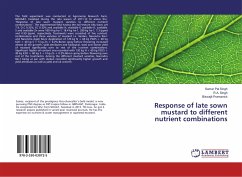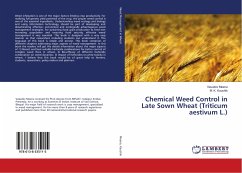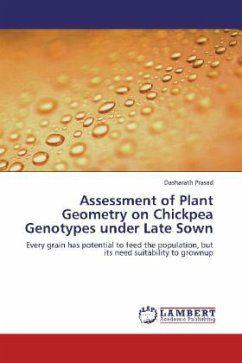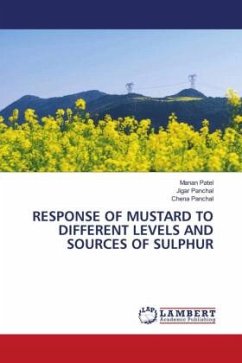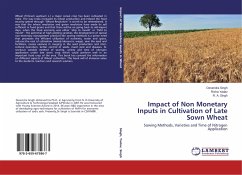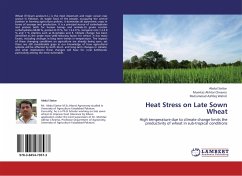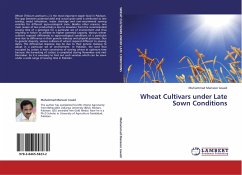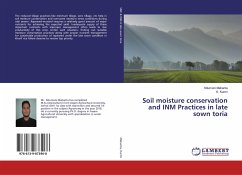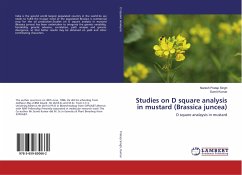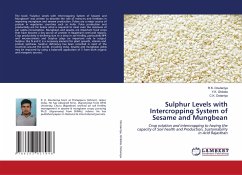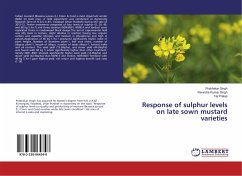
Response of sulphur levels on late sown mustard varieties
Versandkostenfrei!
Versandfertig in 6-10 Tagen
24,99 €
inkl. MwSt.

PAYBACK Punkte
12 °P sammeln!
Indian mustard (Brassica juncea (L.) Czern & Coss) is most important winter (Rabi) oil seed crop. A field experiment was conducted at Agronomy Research farm of N.D.U.A.&T., Faizabad (Uttar Pradesh) during the rabi of 2012-13. Twelve treatments comprised of four levels of sulphur (0, 20, 40, and 60 kg S ha-1) and three varieties (NDR-8501, NDRE-4 and Vardan) were replicated thrice in randomized block design.The soil of experimental field was silty loam in texture, slight alkaline in reaction having low organic carbon and available nitrogen and medium in phosphorus and high in potash.Application...
Indian mustard (Brassica juncea (L.) Czern & Coss) is most important winter (Rabi) oil seed crop. A field experiment was conducted at Agronomy Research farm of N.D.U.A.&T., Faizabad (Uttar Pradesh) during the rabi of 2012-13. Twelve treatments comprised of four levels of sulphur (0, 20, 40, and 60 kg S ha-1) and three varieties (NDR-8501, NDRE-4 and Vardan) were replicated thrice in randomized block design.The soil of experimental field was silty loam in texture, slight alkaline in reaction having low organic carbon and available nitrogen and medium in phosphorus and high in potash.Application of 60 kg S ha-1 produced significantly higher value of plant height, Number of branches plant-1, leaf area index, number of siliquae plant-1, length of siliqua, number of seeds siliqua-1, harvest index and oil content. The seed yield (15.30q/ha), and stover yield (44.83q/ha) was found with 60 kg S which significantly higher than other treatment. Variety NDR -8501 showed significantly higherseed yield (14.95q/ha) and stover yield (42.94q/ha) than NDRE-4 and Vardan. NDR-8501 fertilized with 40 kg S ha-1 gave highest yield, net return and highest benefit cost ratio (1.18).



